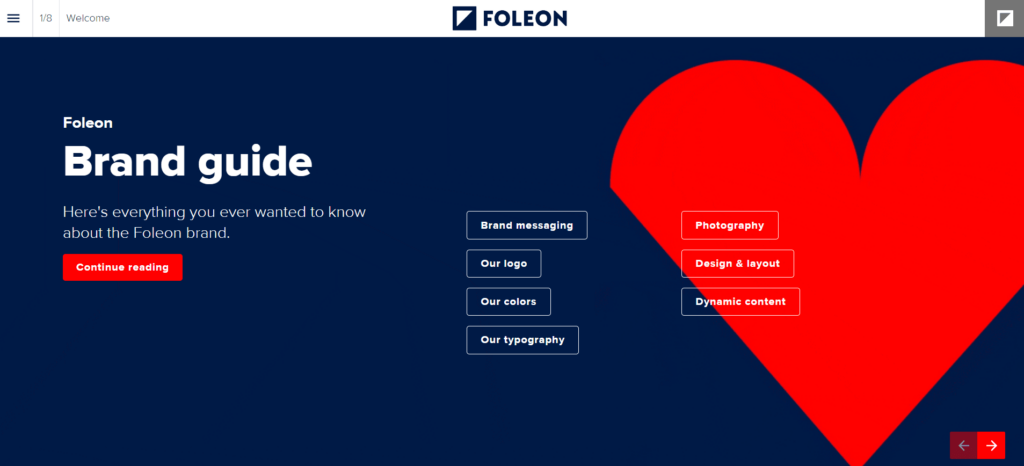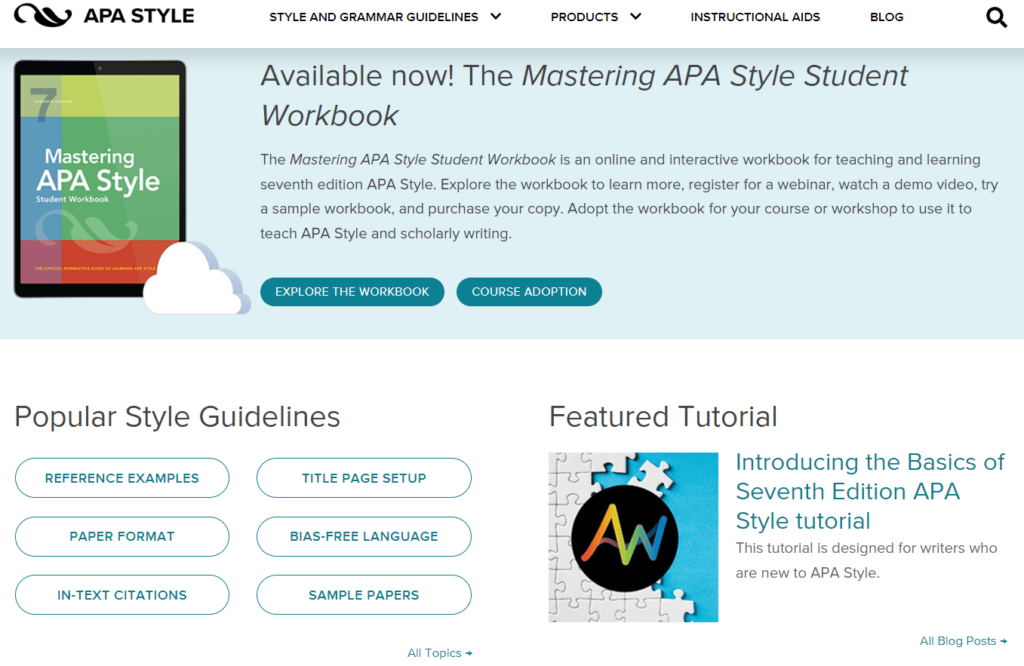Brand Style Guide Examples To Help Shape Your Branding
Value your Brand
For many companies, written messaging — the building blocks for internal and external brand perception — is not tightly controlled in the way that visual assets are.
You’d be hard pressed to find a designer who doesn’t know where to find the correct hex codes and SVG files for their brand. So why do companies post on social media or send out emails without knowing and using consistent vocabulary to describe their offerings?
This is what a brand style guide is for. As a content marketer, communications professional, or someone else who works closely with your company’s brand, creating and using a style guide for your messaging is paramount.
A brand style guide provides the language, unique tone of voice, and various other rules associated with your brand. It is a reference for you as a writer to stay consistent, and a tool to help you ensure your entire organization speaks with a unified voice.
But creating one can seem daunting.
Below, we’ve compiled 5 great examples of public brand style guides for you to draw on for inspiration.
StoryLab.ai also created a resource to help you create your own Brand Style Guidelines.
Awesome Brand Style Guide Examples you should copy
While the following guides are perfect for gathering ideas and gaining an understanding of what a style guide should contain, keep in mind that each is specific to the brand they support — and you must find your own unique style.
Don’t forget to check out the social media accounts for these brands and observe how the guidelines found in these style guides are applied to brand messaging across different platforms.
1. Foleon’s Interactive Brand Style Guide
We’d be remiss to not include our own style guide in this list! In addition to addressing questions of grammar and vocabulary, we include a couple of other elements in our style guide worth pointing out like our core messaging, our brand story, and our company values.
StoryLab.ai note:
Notice that Foleon has created their Brand Style Guidelines in a Foleon Doc instead of a PDF. This means that whenever they make a change in their guidelines, everyone knows about it and everyone uses the same guidelines at any given moment. If their style guide would have been created in a PDF, they would need to email the new version each and every time they made a change and hope everyone would use the latest version. If you Google a style guide of a big brand, you’ll probably find different versions. That’s not great for any brand. Opt-in for creating an interactive style guide.

2.MailChimp’s Web-Based Brand Style Guide
MailChimp’s style guide is one of the best references on this list, as you’d expect from a company whose business is communication.
This style guide is very thorough, including sections on how to write for many different media. They cover social media, email, technical and legal writing, translation, and more. Plus, the sidebar index makes it easy to find any relevant topic.
StoryLab.ai note:
Notice that they are using a web-based format for their brand style guide. This also means that every change they make in their guidelines will be seen by everyone. No old versions hanging around on the internet or people’s desktop.

3. Shopify’s Brand Style Guide Example
Shopify is another great guide worth looking through, alongside MailChimp. They have the same great user experience, with their index sidebar. However, whereas MailChimp emphasizes verbal branding, Shopify emphasizes visual.
Shopify’s visual guidelines are as thorough as MailChimp’s verbal guidelines. They cover topics such as typography, illustrations, sounds, data visualizations, and more.

4. APA’s Brand Style Guide Example
The APA style guide is one of the golden standards for English language style guides, alongside MLA, Chicago, Turabian, and others. These style guides are probably familiar to you from school, where you likely had to reference them when citing your sources in a paper or essay.
These differ slightly from brand style guides. Because they aren’t specific to any company or brand, they don’t take into account values or a mission statement. That does make these academic style guides slightly less relevant to the instructions above. However, they have a far broader scope than any brand style guide when it comes to grammar and usage. That makes them a valuable reference for any grammatical questions you’re not able to answer with the brand style guides posted here.

5. Don’t Use Me Brand Style Guide Example
No one said building your style guide shouldn’t be fun. The final example on our list, Don’t Use Me, highlights all the ways not to use brand assets. The style guide is gorgeously designed, but unfortunately, the browsable PDF type is not responsive.

Conclusion
Brand Style guides influence the internal and external perception of your company and products more than you may realize. That’s why tightening control over how people write about your company is so important. Remember, even if you know exactly what vocabulary to use, your colleagues might not.
Luckily, the example brand style guides above should give you plenty of inspiration to get started with creating your own.
FAQ
What is a brand style guide?
A brand style guide is a document that outlines the visual and written elements of a brand, including its logo usage, color palette, typography, imagery guidelines, voice and tone, and other brand assets. It serves as a reference tool to ensure consistency and cohesion in all brand communications.
Why is a brand style guide important?
A brand style guide is important because it helps maintain consistency and coherence in how a brand presents itself to its audience across different channels and touchpoints. It ensures that all brand communications reflect the brand’s values, personality, and visual identity accurately.
What elements are typically included in a brand style guide?
Elements typically included in a brand style guide include the brand’s logo usage guidelines, color palette with specific color codes, typography guidelines specifying font choices and usage, imagery guidelines dictating the types of visuals that align with the brand, and voice and tone guidelines for written communication.
How does a brand style guide help maintain brand consistency?
A brand style guide helps maintain brand consistency by providing clear and specific guidelines on how to use brand assets and communicate brand messages effectively. It ensures that all stakeholders understand and adhere to the brand’s visual and verbal identity standards, regardless of their role or location.
How can a brand style guide benefit a company’s marketing efforts?
A brand style guide can benefit a company’s marketing efforts by streamlining the creation of marketing materials, ensuring that all materials align with the brand’s identity and messaging, and enhancing brand recognition and memorability among the target audience through consistent and cohesive branding.
Who should have access to a brand style guide within an organization?
A brand style guide should be accessible to all stakeholders within an organization who are involved in creating or managing brand communications, including marketing teams, design teams, content creators, sales teams, and external partners or agencies working on behalf of the brand.
How often should a brand style guide be updated?
A brand style guide should be updated whenever there are significant changes to the brand’s identity, such as a rebranding initiative or the introduction of new brand assets or guidelines. It’s also important to review and update the style guide regularly to ensure that it remains relevant and reflects any evolving brand standards.
What are some common mistakes to avoid when creating a brand style guide?
Common mistakes to avoid when creating a brand style guide include being too rigid or prescriptive, neglecting to provide rationale or context for guidelines, overlooking mobile and digital applications, and failing to involve key stakeholders in the development process.
How can a brand style guide help maintain brand integrity in external communications?
A brand style guide helps maintain brand integrity in external communications by providing clear instructions on how to represent the brand consistently and authentically across all channels and touchpoints. It ensures that external partners, vendors, and agencies understand and adhere to the brand’s visual and verbal identity standards.
What are some examples of well-known brand style guides?
Some examples of well-known brand style guides include those of companies like Apple, Nike, Starbucks, and Google. These style guides typically include comprehensive guidelines for logo usage, color palettes, typography, imagery, and brand voice, reflecting each brand’s unique identity and values.
What are the benefits of having a comprehensive brand style guide?
A comprehensive brand style guide offers numerous benefits, including ensuring consistent brand representation across all platforms, strengthening brand recognition, facilitating brand communication, streamlining design and marketing processes, and empowering teams with clear guidelines for creating cohesive brand experiences.
How does a brand style guide help new employees or external partners understand a brand’s identity?
A brand style guide serves as a valuable resource for new employees or external partners by providing them with clear guidelines on how to accurately represent the brand’s identity, including its visual elements, messaging, and tone. This helps ensure alignment and consistency in all brand communications.
Can a brand style guide evolve over time?
Yes, a brand style guide can evolve over time to adapt to changes in the market, audience preferences, or the brand’s strategic direction. Regular reviews and updates ensure that the style guide remains relevant and effective in guiding brand communication efforts.
How can a brand style guide help maintain consistency in global branding efforts?
A brand style guide provides a standardized set of guidelines that can be applied consistently across different regions and cultures, ensuring that the brand’s identity remains cohesive and recognizable regardless of geographic location. This helps maintain brand consistency in global branding efforts.
What role does accessibility play in a brand style guide?
Accessibility considerations, such as color contrast ratios, font legibility, and alternative text for images, should be included in a brand style guide to ensure that all audiences, including those with disabilities, can access and engage with the brand’s content in a meaningful way.
How can a brand style guide be used to enforce trademark and copyright guidelines?
A brand style guide can include specific guidelines for the proper use of trademarks, logos, and copyrighted materials, helping to protect the brand’s intellectual property rights and maintain legal compliance. This ensures that external parties adhere to usage restrictions and licensing requirements.
What steps should be taken to ensure that a brand style guide is easily accessible to all relevant stakeholders?
To ensure accessibility, a brand style guide should be stored in a central location that is easily accessible to all relevant stakeholders, such as a shared drive or online collaboration platform. Regular communication and training can also help ensure that all team members are aware of and have access to the style guide.
How can a brand style guide help maintain consistency across different marketing channels?
A brand style guide provides guidelines for consistent use of brand assets, messaging, and design elements across different marketing channels, such as social media, print, web, and email. This ensures that the brand’s identity remains cohesive and recognizable across all touchpoints.
What are some common challenges in implementing a brand style guide?
Common challenges in implementing a brand style guide include resistance to change from stakeholders, difficulty in ensuring compliance with guidelines, inconsistency in application across different teams or regions, and the need for ongoing education and training to reinforce the importance of brand consistency.
How can a brand style guide contribute to building brand trust and loyalty?
A brand style guide contributes to building brand trust and loyalty by fostering consistency and reliability in brand communication, which in turn helps build familiarity and trust with audiences over time. Consistent branding reinforces the brand’s values and promises, ultimately leading to stronger connections and loyalty from customers.
Top AI Marketing Generators
Author bio
 Ritesh is a digital marketing manager with years of experience in driving growth. He’s currently the director of inbound marketing at Foleon. You can find more about him on his LinkedIn profile.
Ritesh is a digital marketing manager with years of experience in driving growth. He’s currently the director of inbound marketing at Foleon. You can find more about him on his LinkedIn profile.
Master the Art of Video Marketing
AI-Powered Tools to Ideate, Optimize, and Amplify!
- Spark Creativity: Unleash the most effective video ideas, scripts, and engaging hooks with our AI Generators.
- Optimize Instantly: Elevate your YouTube presence by optimizing video Titles, Descriptions, and Tags in seconds.
- Amplify Your Reach: Effortlessly craft social media, email, and ad copy to maximize your video’s impact.